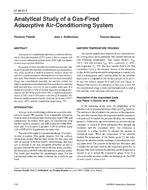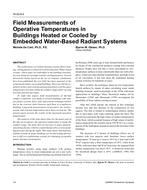Click here to purchase
When implementing or studying building controls and interfaces in the field, researchers often witness first-hand human-building interactions fromoperators and occupants. While current comfort and occupant behavior models are able to explain some of these interactions, many fall under the fields ofpsychology, sociology and other humanities, which can be difficult for building technology researchers to interpret. Likewise, some causes of dissatisfaction,for example those linked to occupants’ acceptance of automated solutions or interface usability, may not be captured by existing evaluation frameworksfor indoor environmental quality. These behaviors remain either unmentioned or are brought up solely as anecdotes in the majority of building scienceresearch and are rarely explored in depth, despite their potential to critically impact the success of building controls and interfaces in real-world conditions.To address these gaps, an international collaborative effort was conducted as part of the IEA EBC Annex 79, to gather stories from research projectsaround the world. This paper presents a pilot study, which offers a new framework for story collection using an online collaborative platform forplanning and brainstorming. Through a series of prompts designed to encourage storytelling, researchers were invited to share anecdotes of unexpectedoperator or occupant behaviors, and to reflect upon their experiences and others’ stories.
Citation: IAQ 2020: Indoor Environmental Quality
Product Details
- Published:
- 2020
- Number of Pages:
- 11
- File Size:
- 1 file
- Product Code(s):
- D-IAQ2020-C55
- Note:
- This product is unavailable in Belarus, Russia


